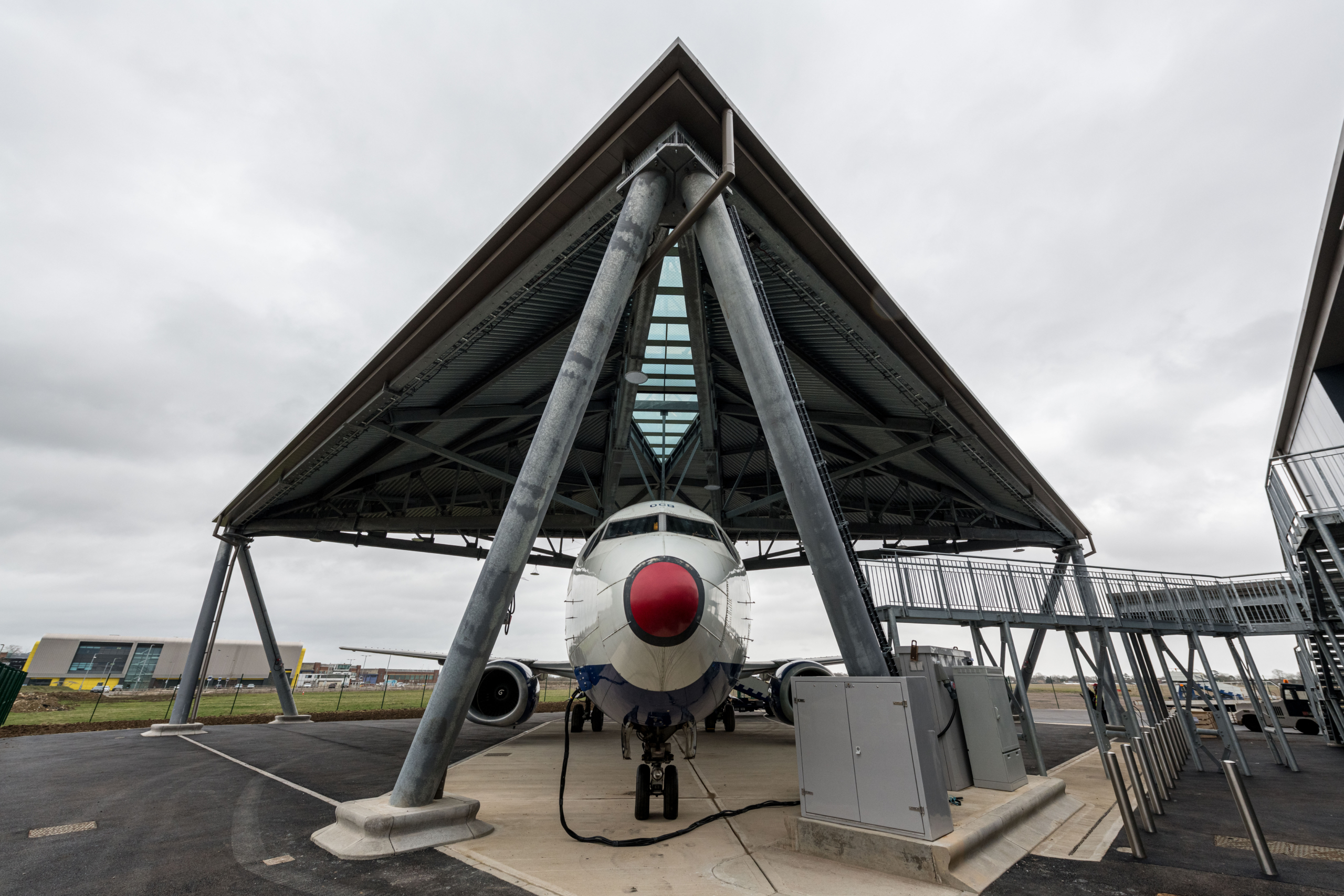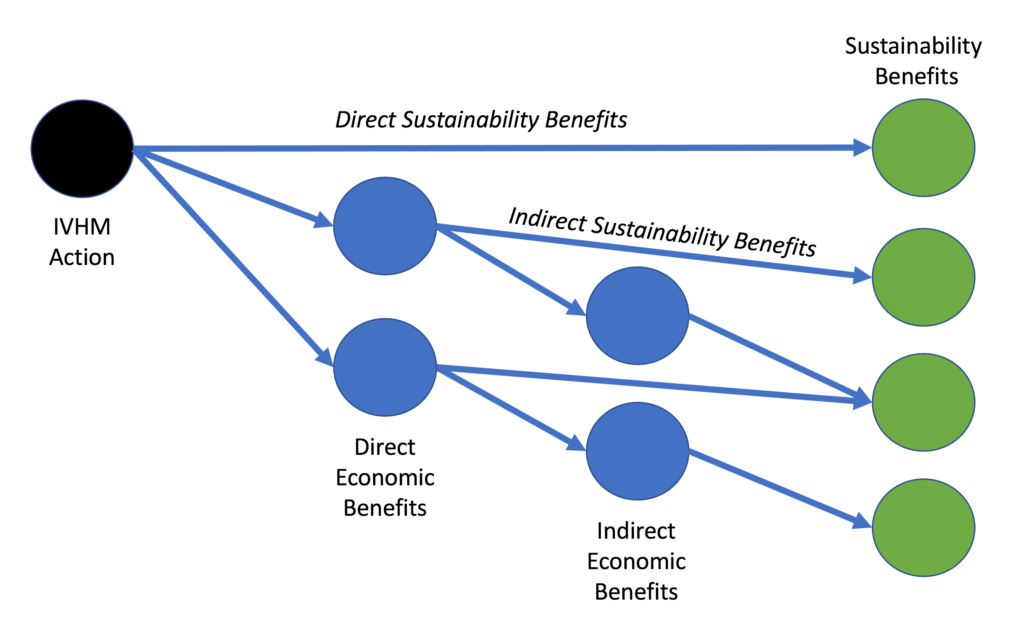Environmental benefits of Integrated Vehicle Health Management (IVHM)
17/11/2021

We are seeing growing focus and investment by industry and governments worldwide to accelerate sustainability results through technology investment. This is driven by market competitiveness imperatives and the constant and the inexorable elevation of overall aircraft efficiency. Multiple OEMs are building pure electric and hydrogen fuel cell-based electric propulsion aircraft, with a focus on the 50 passenger or less market. In fact, Boeing has started certifying an electric aircraft through their joint venture, Wisk. And while these first electric aircraft this decade will only carry a few passengers, Boeing’s Chief Sustainability Engineer, Brian Yutko, has stated that they will increase in passenger count and range over time with improvements in batteries and motors, just like what we are seeing in the automotive industry. The benefits of this investment surge and shift are clear: lower operating and sustainment costs due to simpler systems, and no emissions.
We’ve seen that there are substantial benefits in terms of sustainability in aerospace from digital aviation related activities (Reference “Sustainable aircraft through the prism of digital aviation – what are the key levers?” by John Maggiore dated April 23, 2021). In short, the proactive management of aircraft data can and does yield measurable economic and operational benefits, both in terms of overall operational efficiency and reduced interruptions to operations. These are traditionally seen as “economic” benefits, and these benefits are regularly used to justify investments in technology both on the aircraft and on the ground, and for data transmission and management. It also is the primary impetus to a growing ecosystem of related services with which to exploit the opportunity. Within the realm of “sustainment” (e.g., Maintenance, MRO) there are clear examples of operational efficiencies which can be realized by IVHM. In addition, there are sustainability benefits, that result from these activities. Here we can refer to these benefits and the activities which drive them as “Sustainable Sustainment”.
Sustainable Sustainment is the intentional leverage of technology to deliver quantifiable economic and sustainability benefits in the technical operations’ aerospace domain
IVHM and sustainability
IVHM is very well defined by the Cranfield University IVHM Centre:
“IVHM encompasses a broad swatch of technology both within and beyond the traditional digital aviation domain. IVHM is the unified capability of systems to assess the current or future state of the member system health and integrate that picture of system health within a framework of available resources and operational demand. It is a very wide-reaching capability encompassing business cases and models; legislation, certification and standards; architecture and design; as well as algorithms for prognostics, diagnostics and reasoning.”
In short, IVHM is a key swath of the “digital aviation” domain.
We can categorise the sustainability benefits which stem from IVHM as direct and indirect, and tangible and intangible. Intangible benefits are often focused on employee and market perceptions and brand image. They are very real but difficult to quantify. Here we focus on the tangible benefits. The direct benefits can include material and waste reduction, reduced energy usage, reduced noise, enhanced biodiversity, and of course lower emissions of CO2 and other pollutants of concern. Indirect benefits include labour efficiency, human quality of life, safety, and material usage and consumption.
By its nature, increased efficiency supports sustainability, both directly and indirectly.

Selected examples of Sustainable Sustainment via IVHM
The classic IVHM use case involves proactively and remotely understanding a vehicle’s current our future serviceability. We often call this “predictive maintenance”, “condition-based maintenance” or “aircraft health management”. When we can, through analysis, predict a pending equipment failure we can of course reap the economic benefit of dealing with the issue in a scheduled manner and avoid the likelihood and impact of a schedule interruption, but we can also deliver material direct sustainability benefits. In many cases, operation with a degraded system, while safe and approved, can greatly limit operations in terms of altitude or range. This results in fewer degrees of freedom in vehicle usage and lessens the likelihood of mission or schedule completion. In cases where the equipment is part of the environmental control system, such as a valve, a very significant direct fuel burn penalty (up to 4%) and additional resulting CO2 emissions may be avoided. Of course, there are indirect benefits which follow, such as reduced stock requirements, parts shipping costs, and more efficient labour utilization.
Other Sustainable Sustainment benefits via IVHM may be less obvious but constitute a significant sustainability footprint. Here are some illustrative examples:
- In-flight Data: by monitoring in-flight data, we can help pilots meet efficiency goals and help ensure compliance with company sustainability policies.
- Result: Lower Emissions (from Lower fuel consumption)
- Ground Operations: by monitoring and optimizing ground operations with new sensors we can ensure maximize operational efficiency and reduced local air pollution and noise
- Result: Lower Energy Usage, Lower Pollution, Lower Noise Levels, and Improved Biodiversity
- Airport Air and Ground Traffic: by applying sophisticated analytics and modelling to airport air and ground traffic we can streamline air traffic flow, reduce wasted flight time at arrival, reduce taxi time, and lesson environmental impact.
- Result: Lower Emissions (from Lower fuel consumption), Lower Pollution, Lower Noise Levels, Improved Biodiversity
- Route Optimization: by analysing aircraft data, we can understand the fuel efficiency characteristics of individual aircraft and their performance on different routes. With this understanding we can optimize the usage of the aircraft by route, carry the optimal amount of fuel, and identify degradations (caused by ice, sand, volcanic ash etc.,) of aircraft and take quick action to remedy (e.g., control surface trim).
- Result: Lower Emissions (from Lower fuel consumption), Lower Energy Usage and Reduced Materials Usage/Wastage (from less MRO throughout life cycle)
- Digitally Enhanced MRO: by enabling new inspection methods which are more autonomous we can improve efficiency (increasing accuracy of inspection) while reducing labour and energy usage, in-turn reducing un-needed removal waste, and resulting effort from the process. Also, by deploying analytics and to the aircraft troubleshooting process we can reduce the number of maintenance actions and “no fault found” removals. “Rogue units” can also be identified and addressed through procedure or scrap.
- Result: Lower Energy Usage and Reduced Materials Usage/Wastage
- Application across complete Life Cycle: By applying advanced analytics and modelling at the material, component, subassembly or asset level across the entire lifecycle we can optimize the procurement, manufacturing, operation, maintenance and ultimate retirement/scrap of the asset.
- Result: Lower Emissions (from Lower fuel consumption), Lower Energy Usage and Reduced Material Usage/Wastage
- Green Technologies/Solutions: By leveraging proven IVHM methods and modelling, the aviation industry can increase likelihood of success during the introduction of new green technologies/solutions while acerating their introduction
- Result: Support achievement of industry sustainability goals
Forward-looking innovation
Cranfield’s IVHM Centre has, with its Core Partners, had a long-term aspiration to deliver a so-called ‘Conscious Aircraft’ with the potential for a zero-maintenance aircraft platform. This concept aims to achieve the creation of an IVHM system that is capable of being fully aware of the aircraft’s condition, able to either suggest appropriate action or take action for itself.
By creating the ‘Conscious Aircraft’ the entire aircraft is monitored and is linked to the Aviation ecosystem (Airports, Airspace, Airlines, Passengers, Aftermarket Services), maximizing the benefits from the previous examples. This concept aims to eliminate unforeseen technical faults and in the event of damage be able to decide actions that minimise impact on the environment or operate a modified mission in a military application.
- Result: Maximised benefits from: Lower Emissions (from Lower fuel consumption), Lower Energy Usage and Reduced Materials Usage/Wastage
Summary
It’s well understood that IVHM and digital aviation are delivering economic benefits today. As discussed above they are also delivering significant, albeit often unrecognized, sustainability benefits. By looking at these activities through a new lens we can also see that IVHM will have a key role to ensure the promise of sustainability-focused investments is delivered and that operations and sustainment are as sustainable as possible. Lastly, new research and investment focus are also currently opening new horizons and opportunities for Sustainable Sustainment and beyond, throughout the entire aerospace lifecycle.
Categories & Tags:
Leave a comment on this post:
You might also like…
Automotive Engineering: From student to hypercar innovation at Rimac
We sat down with recent graduate Thomas Perrin, to discuss how his year on the MSc in Automotive Engineering at Cranfield University propelled him from the lecture hall directly into the ...
What this year at Cranfield really meant to me
Every Cranfield journey is unique. In this alumni reflection, Zachea Scicluna shares what her year at Cranfield truly meant, from facing uncertainty to gaining hands-on experience in industry-backed projects. I’ve been reflecting (and delaying) ...
Preparing for assignments and exams?
Sorry! We know it seems a bit mean to mention the exams in January rather than looking forward to the break before it! However, we know many of you will be thinking about your forthcoming ...
Screening for FTSE 100 companies on Bloomberg
So you’re researching an index and need some data on its constituent companies? Bloomberg’s Equity Screening tool makes light work of this, not just for the FTSE, but for indices, exchanges and sectors worldwide. Type EQS ...
Accelerating my future: How Cranfield put me on the fast track to automotive safety innovation
Hello! I’m Michaela Kaiser, and I’m thrilled to share my journey studying abroad. I’m from Calgary, Canada, and I recently graduated from Cranfield’s MSc Automotive Engineering course. My path to Cranfield ...
From Myanmar to Cranfield: My path to Renewable Energy
As someone who is passionate about sustainability, my career goal is to build a path in the renewable energy sector. My aspirations comes from the benefits of developing sustainable energy sources and ensuring energy ...






